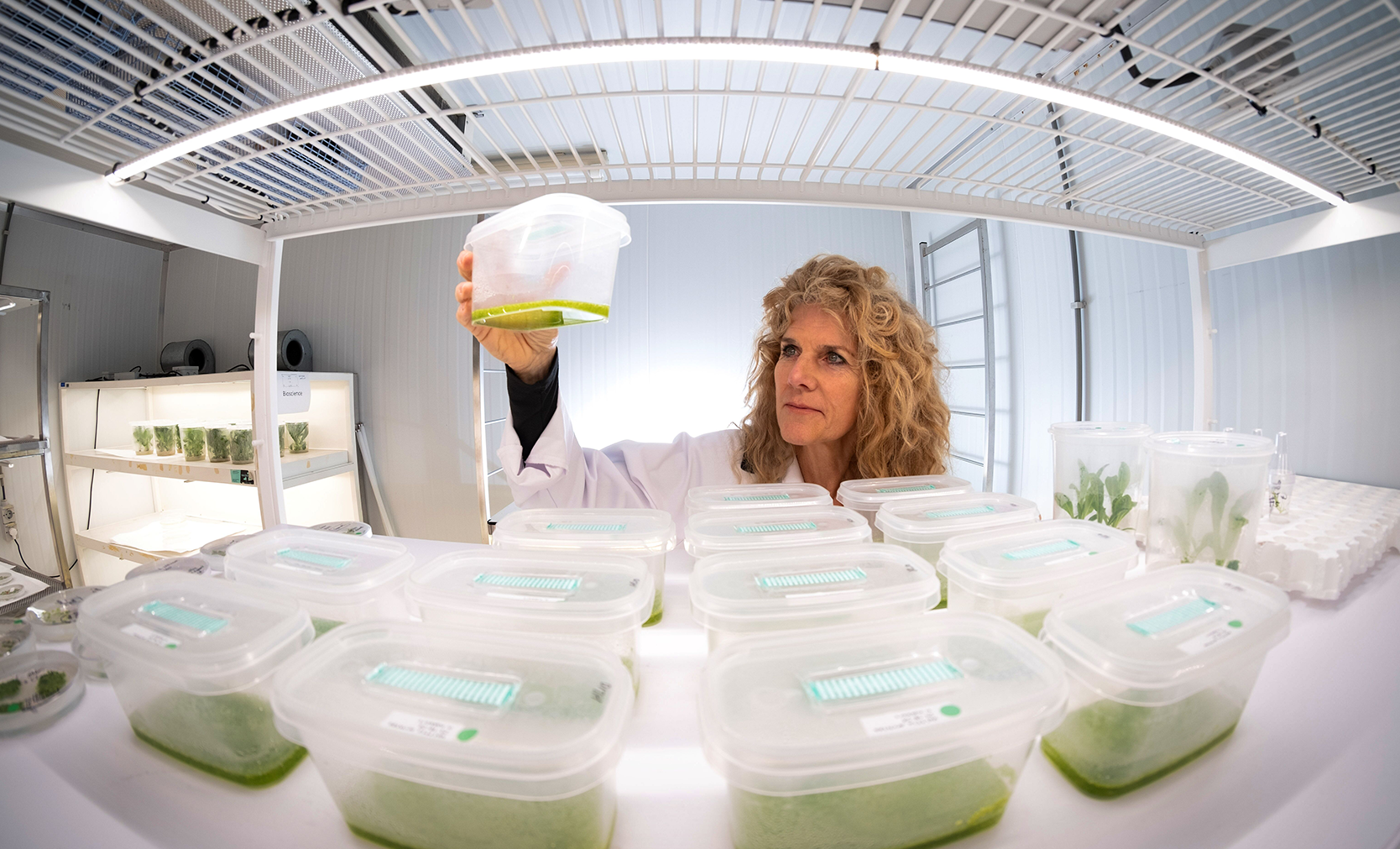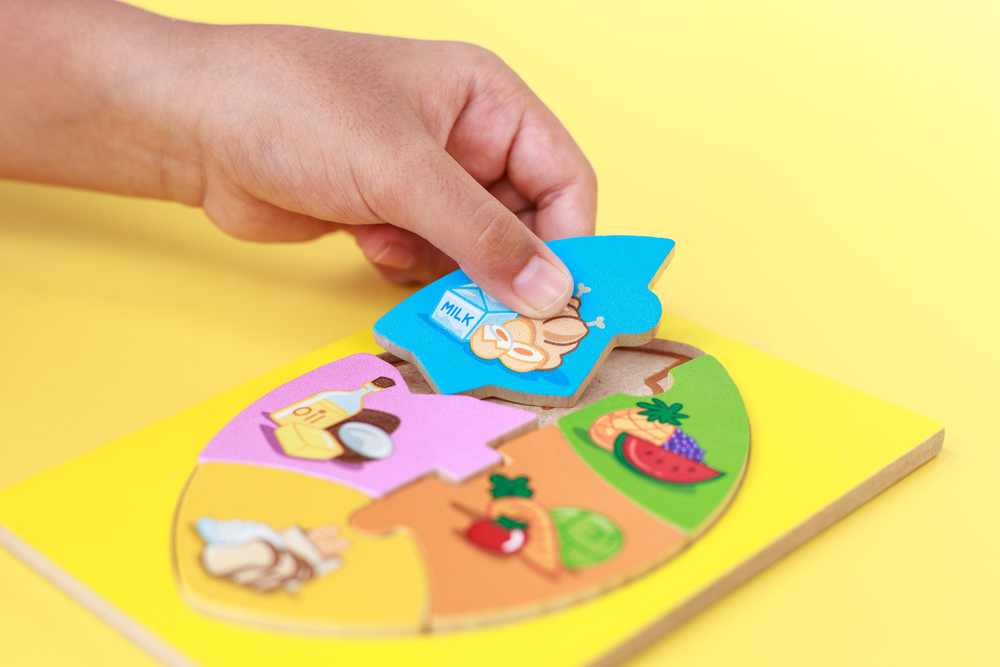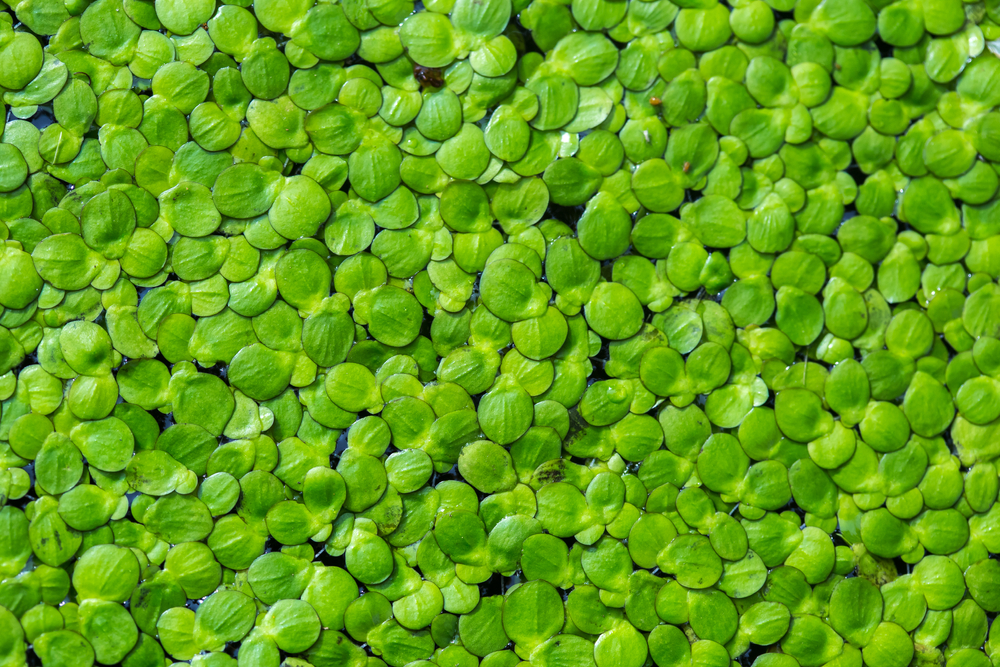Water lentils (commonly known as duckweed) contain lots of protein, can easily be integrated into meals, and are sustainable to produce. Yet we don’t eat them. They are a ‘novel food’, so they are not approved for consumption. But that is set to change. ‘We’re just waiting for Ursula von der Leyen’s signature.’
‘It really is a very nice little plant,’ says researcher Ingrid van der Meer (Bioscience, Wageningen Plant Research, WPR) – at least five times in a conversation of three quarters of an hour. The problem with the little-known water lentil is that this vegetable – which is prepared and tastes rather like spinach – was not eaten in Europe on a large scale before 1997. That makes it a ‘novel food’, so producers have to go through an approval procedure with the European Food Safety Authority (EFSA). Van der Meer – who does a lot of applied research in Bioscience – has been through that procedure.
She first encountered water lentils about 14 years ago. ‘I saw how small the plant was, how fast it grows and how it then splits and self-propagates. All it needs is light, a bit a water and the right nutrients, yet it can grow exponentially.’ What is more, water lentils contain a lot of protein. ‘About 40 per cent of their dry weight, just as much as soya beans.’ In the context of the protein transition, Van der Meer saw water lentils as a great source of sustainable, plant protein. She decided to set to work.
Recouping
Financiers were not exactly queuing up to fund Van der Meer’s research. ‘Companies didn’t know whether water lentils would get through the approval procedure; nor whether, even if that did go well, consumers would then want to eat them. They felt there was too big a risk of not recouping their investment.’ Van der Meer persevered, approached Dutch and international charities, and used all her powers of persuasion, securing a startup fund of 400,000 euros from the London-based Wellcome Trust. This charity added more funding later, and the Dutch Goeie Grutten Foundation invested too.
Companies didn’t know whether the water lentils would get through the approval procedure
The fact that no companies got involved is to her advantage now, Van der Meer explains. In May 2020, she submitted her own application to the EFSA, on behalf of Wageningen Plant Research. ‘Because companies think they can earn money with the new product, they keep some information confidential. Now that we are doing it under the auspices of WPR, everything is in the public domain and if approval is granted, anybody can take it from there.’
Five batches
The novel food procedure was pretty complicated. Along with colleagues from Wageningen Food & Biobased Research, Van der Meer and her team put a lot of work into building up a dossier. ‘To start with, we had to demonstrate that we could grow water lentils on a large scale.’ In an unused greenhouse at a horticultural company, they improvised using 16 basins of 100 square metres. ‘We created our basins using pipes on the ground and agricultural plastic. We poured water into them and added some nutrients and the water lentils. In this installation we could harvest 500 kilos of water lentils a week from each 100-square-metre basin.’
Then they could analyse the harvest. Van der Meer: ‘We had to do all sorts of measurements on five different batches. Luckily, the plant grows fast and we had collected all the batches within a couple of weeks.’ The EFSA asked for details of things like toxicity and allergens, as well as simple things like the composition of the water lentils: how much protein, starch and minerals they contain, for instance. ‘And then of course, how humans digest them.’
Human testing
Once all the readings were taken from the plant, applicants must show how it affects the human body. ‘Rather than testing on animals, we opted for human testing off the bat’, says Van der Meer. ‘That was possible because duckweed is consumed in Asia, which enabled us to convince the medical-ethical committee to approve human testing.
The volunteers who participated in the study arrived at Helix with an empty stomach and were required to consume copious amounts of cooked duckweed. ‘Blood tests then enabled us to determine when the amino acids -building blocks for proteins- were absorbed. We also checked other health markers, such as heart rate and blood pressure, as well as insulin spikes. This study showed us that humans are capable of digesting duckweed without negative health impacts.’
Because Van der Meer expected that EFSA would want more data, she immediately conducted a second intervention study. Half of the volunteers were given a hot meal with duckweed, which had been used in stew, quiche or soup. The other half was given the same meal but with spinach as the vegetable. The researchers asked the volunteers whether they experienced constipation from eating so much duckweed. They also inquired how tasty the meal was. Van der Meer: ‘In general, they enjoyed the flavour of duckweed as much as spinach, or even more. We also conducted a questionnaire to discover whether consumers would be willing to eat the vegetable because if this was not the case, we may as well have ended the project.’
Ticking clock
Altogether, the process has taken about 10 years. It took at least six years to build up the dossier, and after submission, another four years before a committee of experts issued its judgement. Officially, the novel food approval procedure takes 17 months. ‘But every time the assessment committee sends an additional question, the clock stands still. It starts ticking again once you’ve submitted your answer to the EFSA. At the start, we got 20 questions back. I didn’t think all of them were justified or useful. My guess is that not all the committee members were plant experts. It cost us a lot of time and money.’
My guess is that not all the committee members were plant experts. It cost us a lot of time and money
Two years ago it looked as though the submission would founder due to the level of manganese in the plant. ‘Ridiculous because it contained the same amount as other plant products, and less than kale. And plants need manganese for photosynthesis, in order to grow.’ This meant serious frustration for Van de Meer, as well as costing more time and money, but the EFSA is now convinced that the manganese level is safe, and nothing else can really go wrong now.
Restaurants
‘By the time the ink is dry on the signatures, I’ll have warmed up my contacts in the industry to get follow-up projects started,’ laughs Van der Meer. She has already subjected her water lentils to several product development tests. But she doesn’t expect to see water lentils in the supermarket any day soon. Perhaps in up-market restaurants, though. ‘As consumers get used to the product, it will gradually become more widely available. That gives growers time to upscale their production too.’

 Ingrid van der Meer in the lab. Photo Guy Ackermans
Ingrid van der Meer in the lab. Photo Guy Ackermans 

